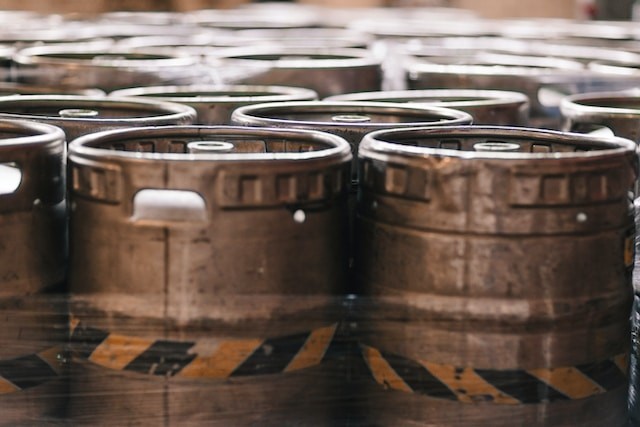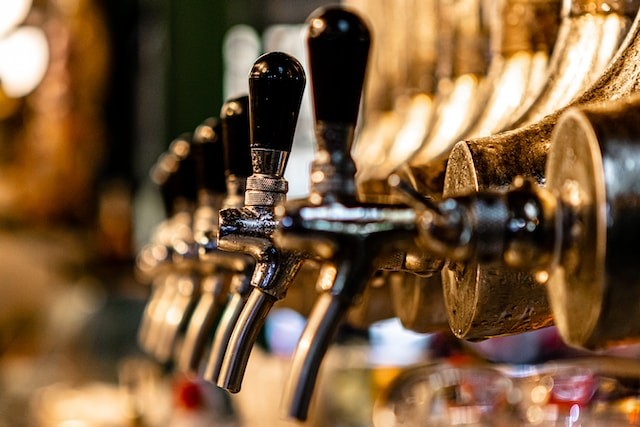Serious disputes are unfolding on the forums of home brewers about which containers to pour beer into: kegs or bottles with subsequent fermentation? Here are all the advantages and disadvantages of kegs with beer tap and bottles.
Advantages of beer kegs
Kegs are the choice of many home brewers. And there are reasons for that.
Firstly, it is convenient. It is easier and faster to pour into a 5l beer keg than into bottles, each of which must be thoroughly rinsed beforehand (and not with chlorinated water), disinfected, filled and still clogged. And keg storage is more convenient than several glass bottles indoors.

Secondly, through the keg, the technological process can be significantly reduced, without loss of flavour and taste. It is enough to connect to a carbon dioxide cylinder and set the appropriate pressure on the beer machine. And that’s it – in a week the beer will completely undergo carbonation. With bottles, everything is much longer: yeast in beer works slowly, it takes months to wait for fermentation.
Thirdly, it is possible to accurately set the carbonation level in the beer pump. Adding a primer will not solve the problem with proper carbonation, since it still depends on yeast strains. The level of dissolved carbon dioxide also depends on the level of fermentation during bottling. You can get rid of all these problems with the help of forced carbonation: you can choose any level of gassing, at your discretion.
Disadvantages of beer kegs
The first drawback (for some it will not even serve as a minus) is a small shelf life. In 1-2 months, the keg must be emptied. But a new batch of beer should be poured into a clean keg!

The second disadvantage is associated with uneven turbidity. Yeast quickly settles to the bottom of the keg, and the first glasses of homemade beer will be very cloudy, and the last ones are already transparent. In this case, when cooking, it is necessary to use yeast with a low level of flocculation, as well as use flour during cooking or add pectin.






